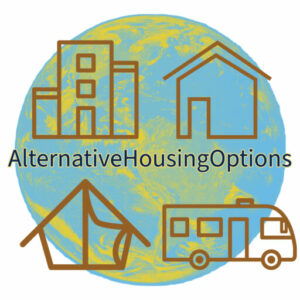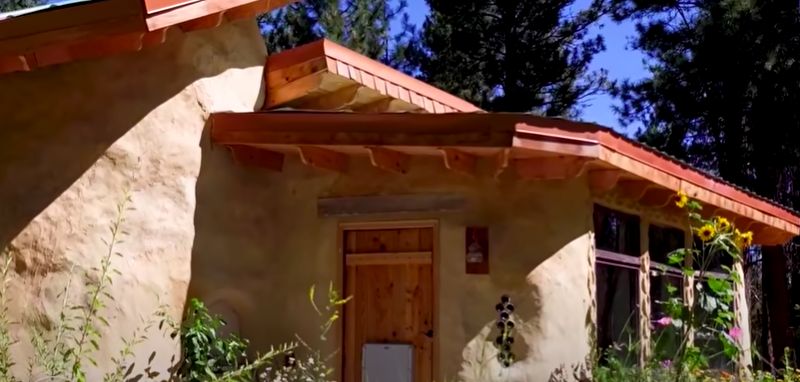Cob houses have been around since the 11th and 12th Centuries and are found in all types of climates. The United Kingdom has cob homes that have survived over 500 years, many still inhabited. Cob houses are constructed out of cob. Cob is one of the most versatile building materials, allowing builders to create unique structures, express artistic abilities, and create a fireproof, earthquake resistant, and very moderately priced home in most areas. The main cost in a cob house is not the materials; it is the labor.
What is cob?
Cob is a mixed material made up of clay, sand, straw, earth, and water. As far as building properties, it has been compared to clay and adobe bricks even though the cob is in lump form.
What is the process to build a cob house?

The cob-building process is one of patience and more patience. Each layer needs to dry before moving on to the next layer. This cobbing process takes buckets of sand, straw, and wet clay mixed by hand, machine, or livestock if you have a horse nearby to create a mud bread loaf shape. These loaves are laid on a foundation and sculpted by hand to build 24-inch cob walls. The 2-foot thick walls provide a safe, durable structure and insulation from extreme temperatures of cold or heat.
The cob construction progress is labor-intensive. Cobbers (people who build cob houses) need to work as the material allows. With a 24 inch thick wall, you may need to wait a day or two before building upon that same section. Walls are built connected but separately to keep the building process as the previous area cures. Once the base or foundation wall is built and dry, doors and windows are set in place, and the cobbing process around those structures beings. After drying, cobbers can trim the walls and add unique shelving and built-in pieces to customize the home.
Does a cob home hold up to weather extremes?
Some of the oldest cob homes have been built in very inclement places, for example, the wet climate in the United Kingdom. According to Environmental Engineer, Michael G. Smith, “If there is clay, there is no reason why you can’t build with cob there.” He does not recommend only exterior Cob walls if your daytime temperature reaches below zero. However, combining a cob exterior and another layer of insulation between the interior and exterior walls can solve that problem. A damp and hot climate may also cause the cob not to cool down, and you may need an alternative cooling source.
Cob will hold up to high wind and rain. You can even safeguard your walls further by building a longer overhang for the roof, adding protective plaster to the exterior, or building a higher foundation.
What does a cob home cost?

To hire professional builders to construct a cob home could cost you the same as a traditional stick-built house due to the labor time. A cob home is a labor of love, and if you can find friends and family to help you, you’ll keep the costs relatively inexpensive. The building materials themselves cost between $4,000–$20,000. You can, of course, add or eliminate costs by using second-hand windows and doors from an organization like Habitat for Humanity or a local flea market. An extravagant cob home can cost $90,000, depending on the fixtures you add to the basic build.
This couple built a cob home in Tennessee for $5,000.

RivendellVilliage.org has a great resource for step-by-step building for a cob house.
Frequently asked questions about alternative housing options
Alternative housing is not for everyone. Some people find comfort in a stick-built house and won’t consider another option. But for those who can’t afford to build —especially in this economy— are handy or willing to trade permanence for travel, space for convenience, alternative housing might be for you.
What are four major housing types of alternatives? The four major housing types for alternative housing are the shipping container, RV, tiny house, and earth homes. The most common alternative housing types are recreational vehicles (RVs) which come in many styles, from your traditional motor home to a 5th wheel or camper style, to a converted van or bus. The second alternative housing type is a tiny house. These can be more permanent and set on a foundation or built on a trailer or skid for traveling. Tiny houses are gaining popularity in price and acceptance. The third housing alternative is an earth home. These have been widely used throughout the UK and are very customizable. The fourth alternative housing option gaining popularity is container houses. This building form is similar to a tiny house and camper combined as it is a converted shipping container turned into a house. You can stack containers or set them in different patterns to give you even more square footage with this option.
What is the cheapest form of housing? The cheapest form of housing would be to crash on someone’s couch, stay for free, trade home maintenance, house sitting, or caregiver services for room and board. If you don’t have those qualifications, the following cheapest form of housing is not really a house. You could consider camping for under $40/night or buying a used RV for $2,000–$10,000 and parking in a free parking spot, or converting a van, bus, or moving truck and doing the same. More permanent options are purchasing a used tiny house for $3,000-$20,000. There are many options for cheap forms of housing, but you might need to use your imagination and change your lifestyle to fit your budget.
What can I buy instead of a house? The sky is the limit when it comes to different types of housing. We’ve mentioned a few alternative housing options in this article, everything from building a cob or earth home, buying an RV, container home, tiny home, converted van, and much more. You could also consider buying into a Co-Op or commune, renting a room or bed in a hostel, or from a friend or family member. If you want to earn your keep, you could offer a house sitting service and move from area to area safeguarding homeowner’s pets and belongings.
How do you live without a house? You don’t need to own a home to have a great life. 68% of Americans rent their home in 2022. If renting is not your thing, deciding the type of lifestyle you want can help you choose whether you’re searching for a permanent structure, one with which you can travel, or something more unconventional. With these ideas in mind, you can search out houseboats, RVs, tiny homes, mobile homes, cob houses, earth homes, yurts, camping, etc. You can live without a house if you can adjust to the lifestyle. We will continue to find alternative housing ideas for you.
Cob houses have been around since the 11th and 12th Centuries and are found in all types of climates. The United Kingdom has cob homes that have survived over 500 years, many still inhabited. Cob is one of the most versatile building materials, allowing builders to create unique structures.


